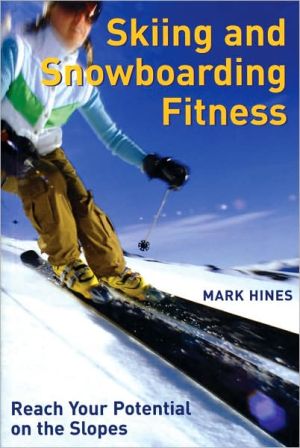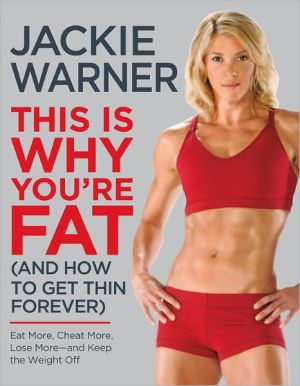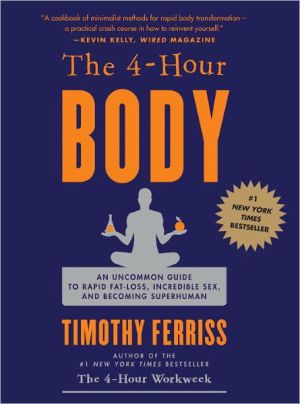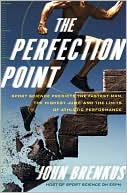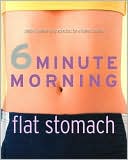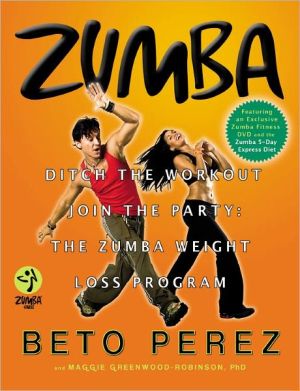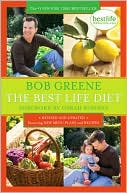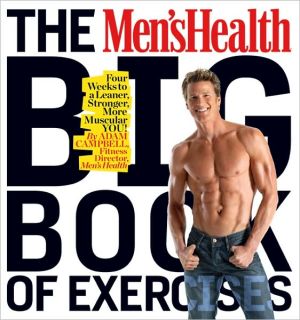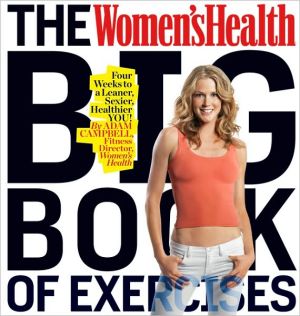Skiing and Snowboarding Fitness: Reach Your Potential on the Slopes
A valuable guide to pre -season training.\ Proper training and conditioning are the best safeguards for an enjoyable and injury-free holiday of skiing or snowboarding. Unlike most sports, skiing and snowboarding put huge demands on both body and mind. A momentary lapse in coordination, concentration, flexibility or reflexes can lead to disastrous, even life-threatening injuries.\ Skiing and Snowboarding Fitness is a well-organized, comprehensive illustrated guide to a realistic and dynamic...
Search in google:
A well-illustrated preseason training and conditioning guide for skiers and snowboarders that gives a practical and dynamic program that can be tailored to individuals. While focusing on the whole body, many of the exercises improve timing and balance.
Excerpted from the\ \ Introduction \ Skiing and snowboarding are becoming more accessible to a greater range of people all over the world. Downhill sports have spread from their origins in Scandinavia to just about anywhere that has a hill and sees some snow. With the growing sophistication of artificial indoor and outdoor slopes, skiing and snowboarding are not only available to more people but can also be practiced to a greater standard than on older dry slopes. Despite the growing numbers of practitioners, the increasing number of ski lifts and trails means that there are many places that can be enjoyed free from the crowds.\ With more people skiing and riding on- and off-trail, it is important to ensure that everyone is appropriately physically conditioned. For those who ski or ride all year round, this can be a good opportunity to improve muscle and joint function, and apply it directly to improve technical skills. For those who hit the slopes only once or twice a year, being physically conditioned will enable them to get the most pleasure and development from their trips.\ The purpose of this book is to introduce you to the most effective exercises for downhill sports. Indeed, the exercises will develop the body of anyone, regardless of how adept they are. The plan is to treat the body as a functional unit, developing that unit for the specific tasks required of it when on the hill or mountain so as to improve technique and fitness. While this is not a book about developing technical skills -- something best learned on the slopes -- it does set out to train the individual to be better able (from a specific fitness perspective) to develop technicalskills.\ As an exercise scientist specializing in biomechanics, my work involves studying the way people move and then finding ways to improve their movement and reduce their risk of injury or pain. You may be surprised to learn that there are very few top athletes with fantastic biomechanics. This is not to say that moving badly is good because these people are likely to pick up muscle injuries (we've all heard of soccer players and sprinters tearing their hamstrings) and may suffer from even more problems later in life.\ Regardless of what skill level you are -- whether an absolute novice or a gold medallist -- you can improve your abilities on the slopes and decrease your risk of injury. I have never met anybody who suffered from a slight injury, or was only slightly sore the day after their first day on the slopes. So, we shall begin at the beginning. We will get you moving properly first, to ensure your joints are doing what they are supposed to, and then we will start increasing the demands of the training over the course of several weeks. This will have the effect of developing the body specifically for the rigors of skiing and riding while maintaining optimal joint positioning. In short, you will be moving properly and performing what I believe to be the best training programs ever devised. I write that because most exercise programs tend to train the legs and arms, which is interesting but not specific enough to do much good, but more on that later.\ From a safety perspective, the fitter someone is, the less likely that person is to have an accident. There are, however, many types of fitness. Although we tend to have a preconceived idea of what we would describe or recognize as fitness, we can quite easily miss out on some important factors. We could describe a marathon runner as fit, and we could describe an Olympic power-lifter as fit, and although we would be correct both times, they are clearly very different types of fitness, and one type is by no means more important than the other. Someone who plays chess could be described as mentally fit, and could 'train' to improve mental fitness, but this in itself would not make the chess player fitter for any physical function.\ Flexibility, strength, endurance, power, cardiovascular ability, balance, proprioception (detailed later), stability and nervous function are all important and independent types of fitness. When all these factors that contribute to overall fitness are developed, physical and mental fatigue can be offset or prevented, thereby improving all-round ability to perform to the best standard that your technique will allow. Technique itself can then be developed far better than if the body lacks sufficient levels of fitness in any of the factors mentioned.\ Most importantly, 'fitness,' in whatever guise, can be improved through developmental training. This means starting from whatever exercising background -- whether novice, beginner, intermediate, advanced or professional -- and improving ability through small but significant steps. The exercises included in this book make up a course of different programs. They are intended not just to take the beginner to an advanced stage, but to take anybody from any level and allow them the opportunity to make natural and comfortable progressions far beyond those that might be derived from other programs.\ Skiing and snowboarding are highly technical sports, and although technical ability can be nurtured through an appropriate exercise program, actual technical skills are best improved when on the hill. What improvements depend upon, however, is the body's ability to recover from bouts of skiing or riding (even down to an individual turn), as well as the body's ability to react and move accordingly in relation to speed and the to nature of the surface beneath it. Exercise training can be used to prevent fatigue, to ensure muscles have energy for developing power when needed, and to allow the body to react to maintain posture and balance regardless of the demands of the terrain. This can all be brought together to give the individual the supporting tools required to make the most out of their specific sport.\ Fitness for downhill sports has to include a number of factors. Most importantly, regardless of the starting point, everybody can benefit from specific training. The problem is that few people really understand what 'specific' means, and the abundance of contradictions and misconceptions in the exercise industry could bewilder the most seasoned professional from any background. By the end of this book, however, you should have improved your knowledge of skiing and snowboarding fitness to the point of being an expert on the subjects. The goal, therefore, is not only to improve your overall fitness and ability, but also to increase your understanding of how the body works, and how this relates to what is essentially an original approach to training for two of the most exciting sports in the world.
AcknowledgmentsIntroductionThe History of Hitting the SlopesThe Exercise RenaissanceInjuriesConnective TissueUpper Body InjuriesHead InjuriesSpinal InjuriesShoulder InjuriesInjuries to the HumerusSkier's ThumbLower Body InjuriesKnee InjuriesDOMSCollisionsMinimizing RisksConditioning for Injury PreventionFlexibility for Injury PreventionFood and DrinkTemperatureSummaryBibliographyThe Exercise ProgramsThe BackgroundTraining CyclesNovice to World ChampionExercise TerminologyPreferred Training ProgramAbbreviated Training ProgramContinued Training ProgramExercise EquipmentThe ProgramsWarming UpGeneral Points on TechniqueGeneral Pointers on the ProgramBalance and ProprioceptionMuscular Strength and EnduranceProgram 1Program 2Advanced Joint Strength and StabilityProgram 1Muscular PowerAdvanced Balance and ProprioceptionProgram 1Program 2Maintenance/Recover ProgramCooling DownStretchingCardiovascular TrainingNutritionOn the SlopesAprès-skiThe Final Word
\ Lexington Herald-LeaderOutlines an accessible and realistic fitness program ... provides solid information that's well illustrated with photographs.\ \ \ \ \ \ Rainbo Electronic ReviewsTis the seasxon to be shushing and slaloming, and Mark Hines shows you how to best prepare yourself for the slopes with this illustrated guide to exercises tailored for the skier or snowboarder. You get a selection of several complete exercise programs, with experienced advice on how to customize them to your needs.\ \ \
